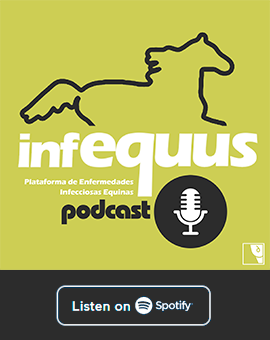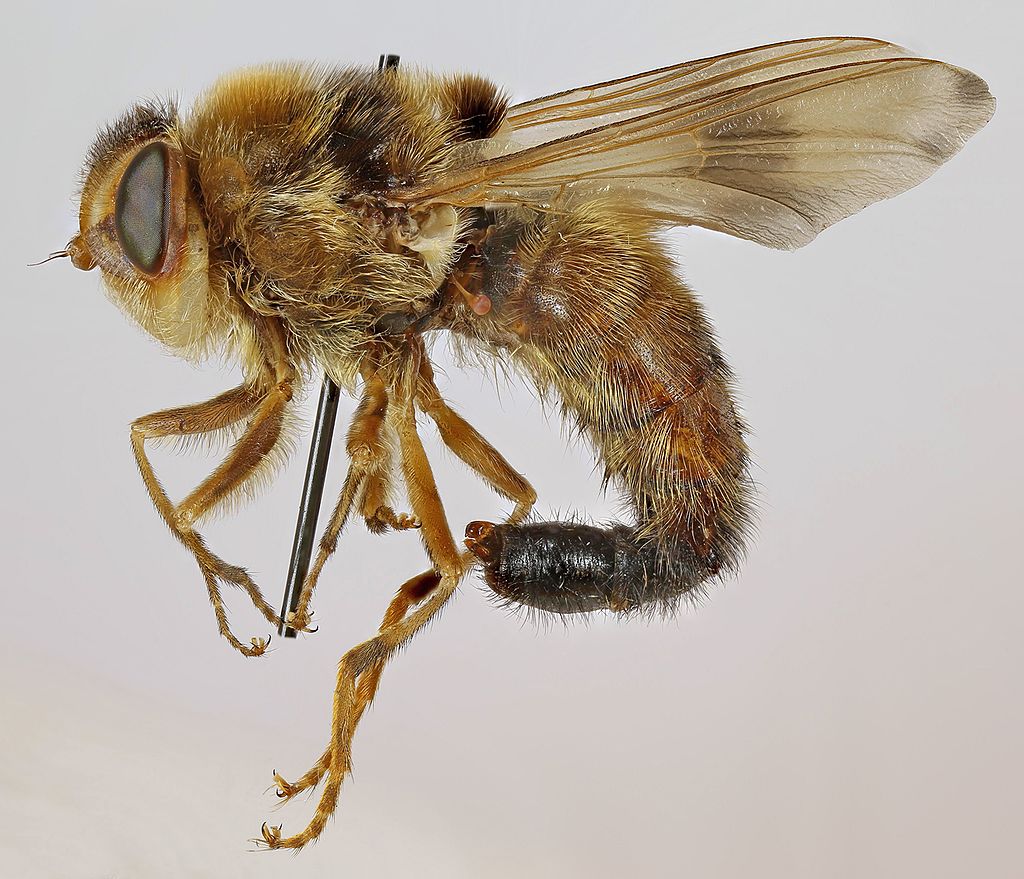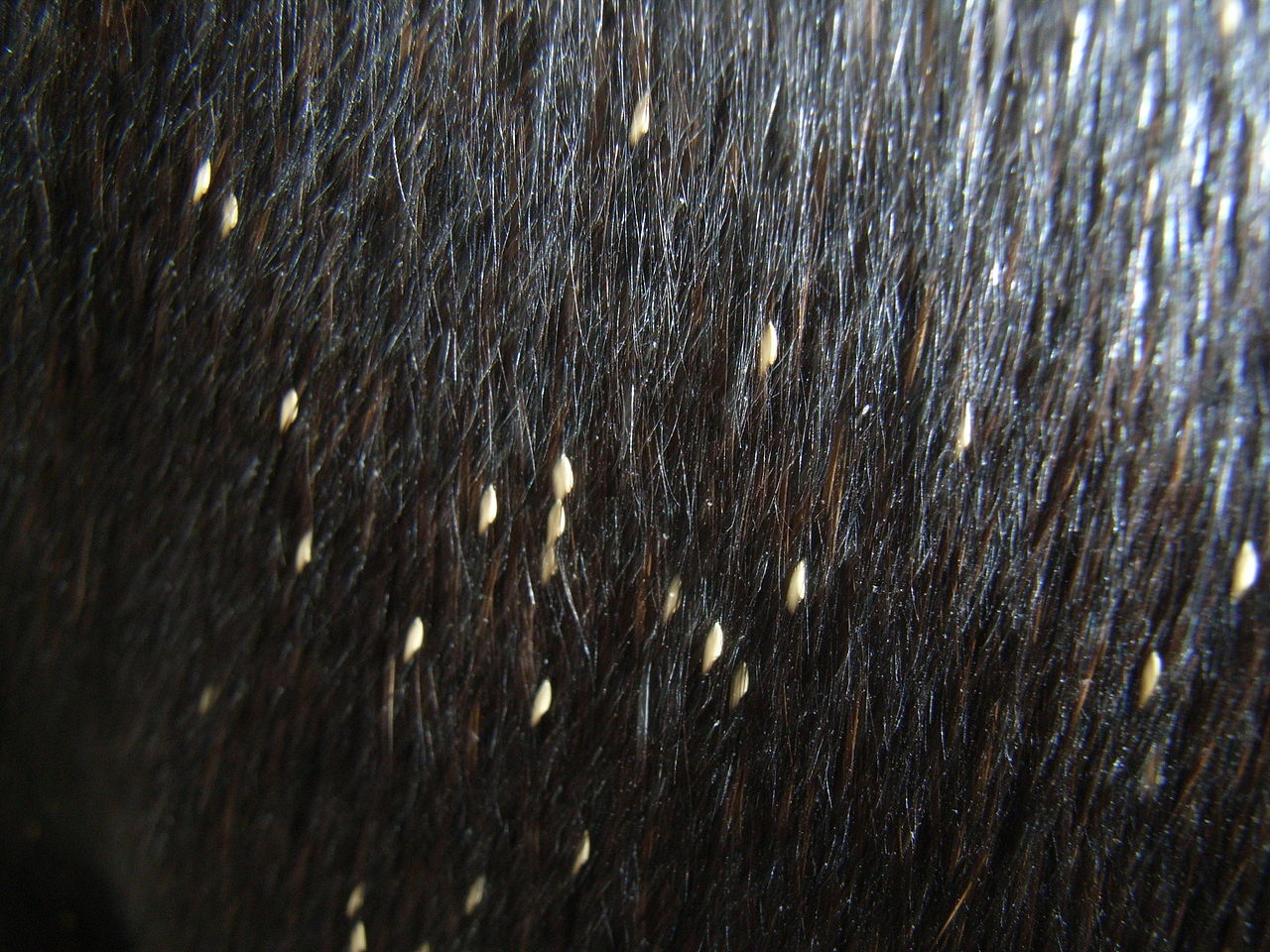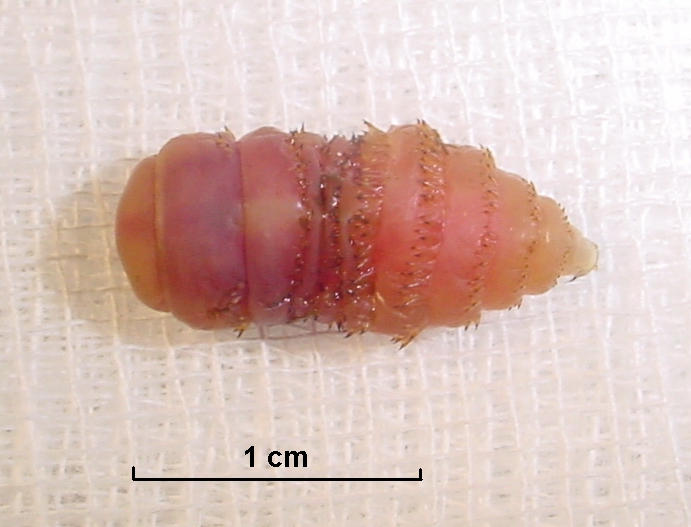Gasterophilosis
Etiology
Gasterophilolsis or horse bot is a specific myiasis produced by the infestation of larvae of arthropods of the genus Gasterophilus. Seven of the eight known species of Gasterophilus infect the horse (G. intestinalis, G. haemorrhoidalis, G. inermis, G. nasalis, G. nigricornis, G. pecorum and G.meridionalis), while one species (G. ternicinctus) has only been recovered in donkeys and zebras. Adult botflies are hairy and similar in size and appearance to honeybees.
Epidemiology
Gasterophilus spp. is an obligate parasite of equidae species, has a monoxenous life cycle and a worldwide distribution. Horses become infected with this parasite by ingesting larvae born from eggs laid by female flies. The sites on the horse's body where female flies lay their eggs differ among Gasterophilus species. The G. intestinalis female flies lay their eggs mainly at the distal ends of the front legs, and occasionally on the hind legs and ventral regions of the abdomen. The female flies of G. nasalis, G. haemorrhoidalis, G. inermis and G. nigricornis lay their eggs on the head, near the mouth. Unlike the other species, the females of G. pecorum lay their eggs in the grass and hay. The prevalence and incidence vary greatly from one place to another. Gastrophilosis shows a clear seasonality. Adult flies fly and are active only in the hot summer months, which is when they are infective. In regions with a warmer climate, adult flies can occur throughout the year. After completing their development inside the host, the larvae break off and leave with the faeces. Once outside, they are buried in the ground or remain in the piles of manure transforming into pupae in 1 to 2 months. Adult flies do not feed and live only a few weeks to reproduce. The females begin the search for suitable hosts a few hours after the copulation, and for this they can travel distances of several kilometers.
Pathogeny
Once ingested, L1 usually molt to L2 larvae in the oral cavity and migrate to final digestive tract place (G. intestinalis to the stomach (cardia), G. nasalis to the small intestine (duodenum), G. pecorum to the pharynx or stomach (cardia) and G. haemorrhoidalis large intestine (rectum)) where they are grasped by means of the buccal hooks. The mature L3 larvae have chewing mouthparts with which they scrape the tissues of the host to feed themselves causing ulceration of the mucosa. In most cases, infections cause only mild gastritis. But massive infestations can cause serious digestive disorders, especially for young foals. Adult horses usually acquire a certain level of immunity.
Clinical signs
Clinical signs are derived from the presence and lesions produced by larvae in the digestive tract of the host, although the egg laying activity of female flies can irritate horses and lead to abnormal behaviour in an attempt to avoid the flies. The signs range from oral, gingival or lingual irritation, inflammation or necrosis that can lead to difficulties in feeding, dysphagia and, consequently, weight loss and physical condition (especially in young animals), to digestive disorders caused by L2 and L3 larvae attached to the stomach or intestinal wall (inflammation of the gastric and intestinal mucosa, ulcers, gastric rupture, intramural gastric suppuration, gastroduodenal perforation and gastroesophageal reflux, peritonitis and death).
Diagnosis
The direct observation of eggs in the hair of animals in endemic areas can give a presumptive diagnosis that is confirmed by the finding of larvae in the digestive.
Treatment
Avermectin and moxidectin anthelmintics are highly effective for the control of bots. The most effective time to administer boticides is in the late fall after the first hard frost, when adult fly activity has ceased. In regions with a warmer climate where flies can occur throughout the year additional treatments may be needed.
Prevention and control
Bots can be controlled by applying insecticides to prevent adult flies from laying eggs on the horse, clipping hairs or removing eggs from hairs before they can be ingested by the horse, and administering appropriate anthelmintic agents. Other measures are collecting and eliminating the faeces contaminated with larvae.
Public Health Considerations
Gasterophilosis is a zoonosis. Botflies lay their eggs only on or near horses; however, people in contact with horses can occasionally become infected with larvae or eggs close to hatching. Migration of first-stage larvae is associated with cutaneous and ocular myiasis in humans. The burrowing of larvae beneath the skin may produce a visible tortuous path with severe pruritus.
References
- Equine Infectious Diseases. 2014 Elsevier Inc. ISBN: 978-1-4557-0891-8.
- Parasitipedia.net. Junquera P.




